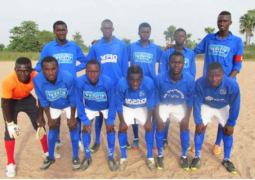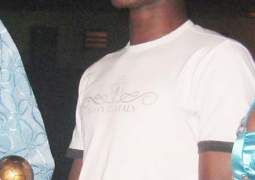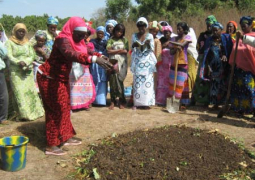
The
Gambia Network of AIDs Support Societies (GAMNASS) and the International
Treatment Preparedness Coalition West Africa (TPC WA) in collaboration with
Global Fund, is conducting a four-day training for 35 Community Treatment
Observatories, which includes 12 data collectors and 23 CCGs on HIV treatment
activists.
The
objective of the project funded by the Global Fund is to strengthen the
capacities of Treatment Activists on the management of the ARV Supply chain and
techniques, reinforce the strategic information on services delivery, reinforce
the leadership of PLHIV to influence HIV treatment, care and supply policies
and protocols- treatment access advocacy.
According
to officials, the four-day training being held at CIAM conference hall in
Kanifing, is expected to build the capacities of 35 Community Treatment
Observatories.
In
his welcoming remarks, the President of The Gambia Network of AIDS Support
Societies, Ebrima Sarr, informed the gathering that the objective of the
training was to create a regional treatment observatory and to build their
capacities in treatment monitoring.
He
disclosed that GAMNASS has been working with the International Treatment
Preparedness Coalition of West Africa ITPC to achieve its intended aims and
objectives, although with minimal resource to conduct its activities.
According
to him, GAMNAS is the umbrella organization of PLHIVs and both a member of the
CCM and ITPC-WA.
“As
an umbrella organization GAMNASS builds the capacities of its 11 member
organizations to provide care and support service to PLHIV and hope for a world
in which communities’ access basic preventive services and quality treatment
for PLHIVs is guaranteed,” he assured.
In
his presentation, the Program Manager of GAMNASS, Samba Sey, emphasised more on
the significance of the training, noting that it would help to improve the
knowledge and skill of data collectors in treatment and educate them with
directly applied knowledge throughout the project implementation.
Mr
Sey expressed expectation that after the training the data collectors would
have the knowledge to confidently engage in discussions about the science of
HIV, and HIV treatment and prevention.
“HIV can be transmitted through a personal
body fluids, blood, semen, vaginal fluid and breast milk,” Sey explained.
For
her part, Alimatou Jallow, HIV treatment coordinator from the National AIDS
Control Programme also made a lengthy presentation on the science of HIV
treatment, what HIV Treatment is and WHO guidelines.
According
to Ms Jallow, there is no cure foe AIDS, but HIV is treatable with medication
and its treatment is called antiretroviral therapy which involves using drugs
known as antiretroviral (ARVs) in the treatment.
Read Other Articles In Article (Archive)
Africa’s development lies in pathway of industrialization
Jun 22, 2016, 10:16 AM




